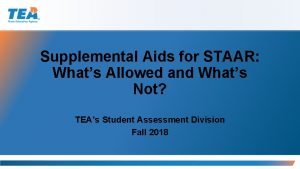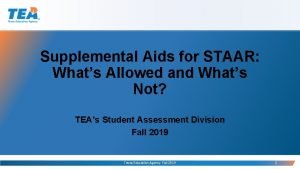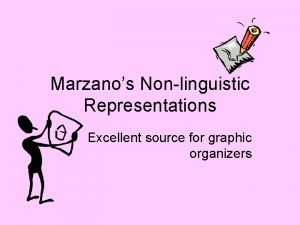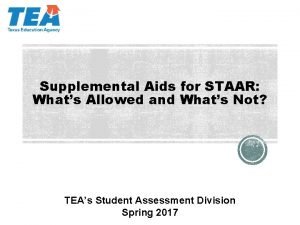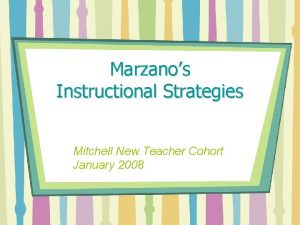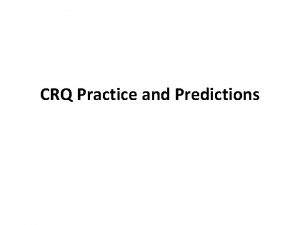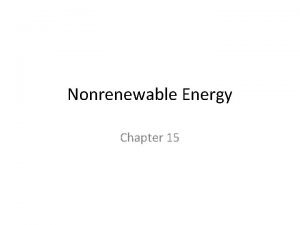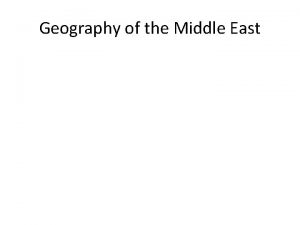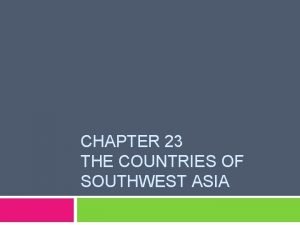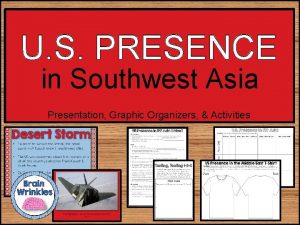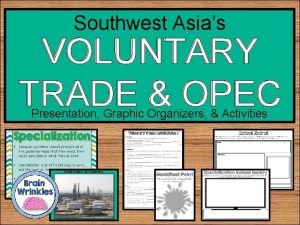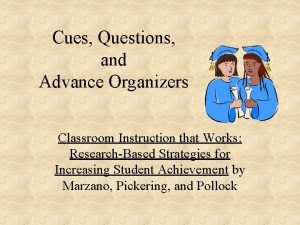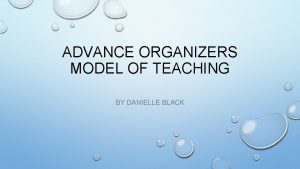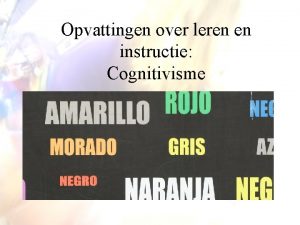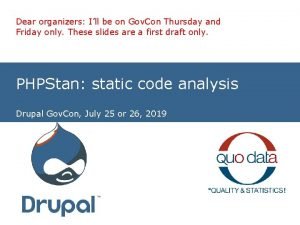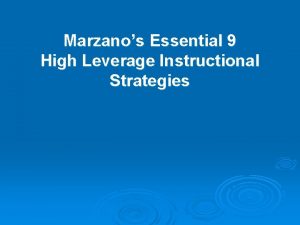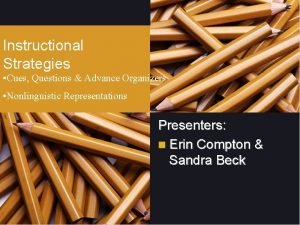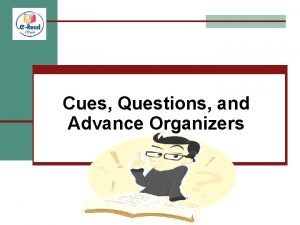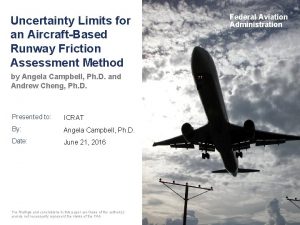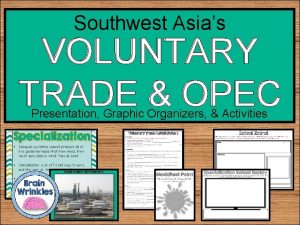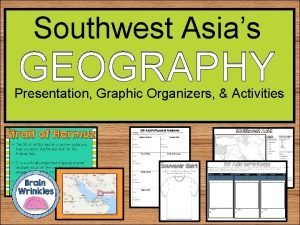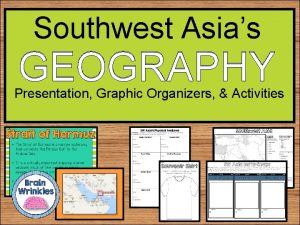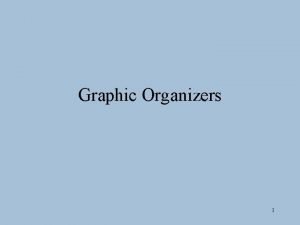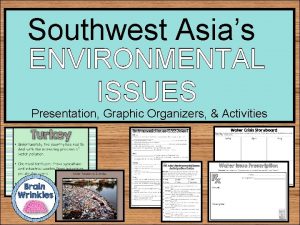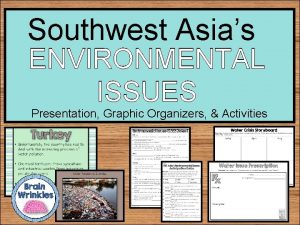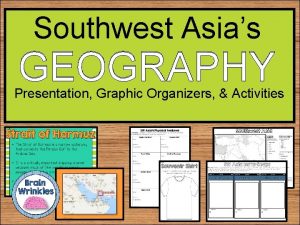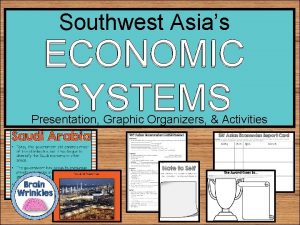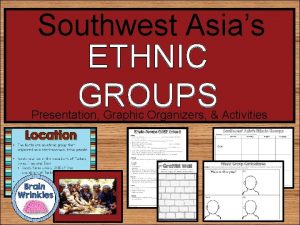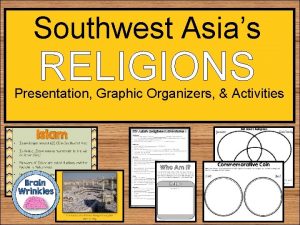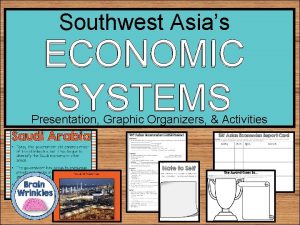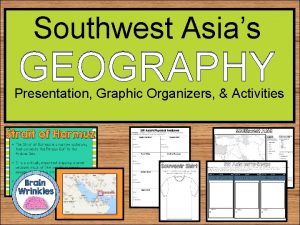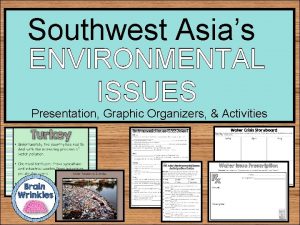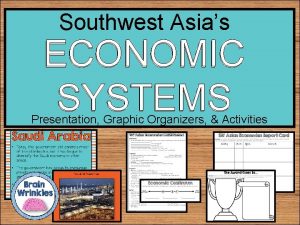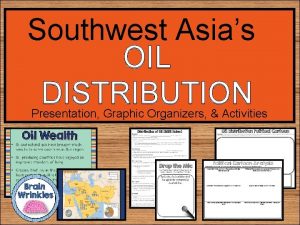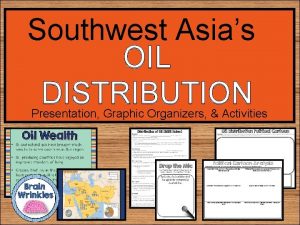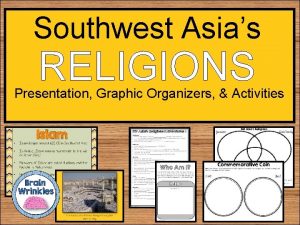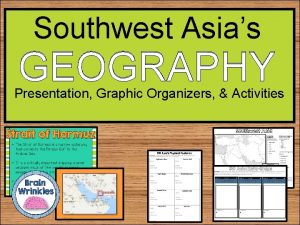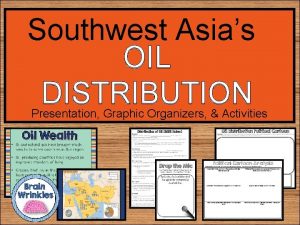Southwest Asias VOLUNTARY TRADE OPEC Presentation Graphic Organizers














































- Slides: 46

Southwest Asia’s VOLUNTARY TRADE & OPEC Presentation, Graphic Organizers, & Activities

STANDARDS: SS 7 E 5 Explain how voluntary trade benefits buyers and sellers in Southwest Asia (Middle East). a. Explain how specialization encourages trade between countries. b. Compare and contrast different types of trade barriers, such as tariffs, quotas, and embargoes. c. Explain why international trade requires a system for exchanging currencies between nations. d. Explain the primary function of the Organization of Petroleum Exporting Countries (OPEC). © Brain Wrinkles

TEACHER INFO: CLOZE Notes • The next pages are handouts for the students to use for note-taking during the presentation. (Print front to back to save paper and ink. ) • Check the answers as a class after the presentation. © Brain Wrinkles

Voluntary Trade CLOZE Notes 1 Why Trade? • Voluntary trade occurs when different countries choose to engage in the ____________ with one another. • Countries trade goods because no country has ____________ to produce every single thing its people need. • Voluntary trade is good for countries because it lets a country ____________ and buy the resources it needs. Specialization • Because countries cannot produce all of the goods/services that it needs, they must specialize in ____________. • Specialization is an ____________ , and the cost of items produced is lower. • It increases trade because a country can get what it needs at the ____________ when produced by someone who specializes in producing that item. • Specialization ____________ among countries, because no country produces everything it needs. • The country selling the product ____________ , and the country buying the product gets what it needs. SW Asia • Saudi Arabia, Iran, Iraq, and Kuwait specialize in ____________ and export millions of barrels of oil every day. • There are plenty of countries around the world that ____________ , and in turn, they export food, medicine, and raw materials, to the region. • Israel specializes in the ____________. • The country imports rough diamonds and exports cut and ____________. • Turkey has a more diversified economy and exports coal, ____________ , and some food to Europe. Barriers • Trade barriers are natural or man-made ____________. • Natural trade barriers include ____________ , deserts, rainforests, or lack of access to bodies of water. • Afghanistan is a ____________ , so trade is difficult because it does not have ports to ship goods overseas. • Political trade barriers are policies ____________ to regulate trade. • Countries sometimes set up trade ____________ because they want to sell and produce their own goods. • They are usually meant to help domestic producers ____________ with foreign producers in the world marketplace. © Brain Wrinkles

Voluntary Trade CLOZE Notes 2 • Countries sometimes set up trade ____________ because they want to sell and produce their own goods. • They are usually meant to help domestic producers ____________ with foreign producers in the world marketplace. Tariffs • Tariffs are ____________ placed on imported goods. • They cause the consumer to ____________ for an imported item, thus increasing the demand for a lower priced-item produced domestically. • For example, Saudi Arabia and Egypt have recently ____________ on food imports to help citizens cope with rapidly increasing food prices. Quotas • Quotas are ____________ on the amount of a good that can be imported into a country. • For example, Israel’s government could protect the country’s rug manufacturers by ____________ Turkish rugs imported per year. • Quotas can cause shortages, which causes ____________. Embargoes • Embargoes are another ____________ to trade. • In an embargo, nations ____________ with a country at all. Examples • After Iraq invaded Kuwait in 1990, the United Nations placed an ____________ , only allowing it to export enough oil to buy its citizens’ food. • After the 9/11 attacks on the United States, the UN place an embargo on Afghanistan and members could ____________ to the country. • The US has had several embargoes with Iran over the past twenty years because of Iran’s ____________. © Brain Wrinkles

Voluntary Trade CLOZE Notes 3 Currency Exchange • Currency is something that is ____________ and can be used to purchase goods and services in a market. • Because countries have ____________ , international trade requires a system for exchanging currencies between nations. • Money from one country must be ____________ of another country to pay for goods in that country. Exchange Rate • What the ____________ in terms of another country’s currency is called the exchange rate. • For example, an exchange rate of 3 Turkish lira to the US dollar means that 3 lira are worth the ____________. • Foreign exchange makes it easier to trade all ____________. OPEC • In 1960, Iran, Iraq, Saudi Arabia, Kuwait, and Venezuela formed an organization called the Organization of ____________ Countries (OPEC). • OPEC’s purpose is to ____________. • It unifies ____________ in order to promote stability in the world oil market and to ensure a regular supply of petroleum to other countries. • OPEC sets the prices and ____________ produced by its member nations. Function • OPEC functions by increasing or decreasing the ____________ each member nation produces. • Before 1960, the amount of oil produced worldwide was ____________ for it. • Because of this, oil ____________ and oil-producing countries made less money. • After OPEC was formed, oil production was controlled and the ____________ worldwide. • Oil prices rose and oil-producing countries ____________. Today • Today, OPEC has expanded to ____________ countries. • These countries account for ____________ of the world’s oil production and 73% of its known oil reserves. • OPEC has generally been ____________. • OPEC has ____________ of its member countries and has helped prevent religious hatred from interfering with the world’s oil supply. © Brain Wrinkles

Southwest Asia’s VOLUNTARY TRADE Ame Specialization, Trade Barriers, Currency Exchange, & OPEC © Brain Wrinkles

Specialization © Brain Wrinkles

Why Trade? • Voluntary trade occurs when different countries choose to engage in the exchange of goods with one another. • Countries trade goods because no country has all the resources necessary to produce every single thing its people need. • Voluntary trade is good for countries because it lets a country sell its own resources and buy the resources it needs. © Brain Wrinkles

Specialization • Because countries cannot produce all of the goods/services that they need, they must specialize in what they do best. • Specialization is an efficient way to work, and the cost of items produced is lower. • It increases trade because a country can get what it needs at the lowest cost when produced by someone who specializes in producing that item. © Brain Wrinkles

Specialization • Specialization encourages trade among countries, because no country produces everything it needs. • The country selling the product makes a profit, and the country buying the product gets what it needs. © Brain Wrinkles

SW Asia • Saudi Arabia, Iran, Iraq, and Kuwait specialize in oil production and export millions of barrels of oil every day. • There are plenty of countries around the world that import Middle Eastern oil, and in turn, they export food, medicine, and raw materials, to this region. • Petroleum accounts for 90% of Saudi Arabia’s exports, which means that the country specializes its economy in the oil industry. © Brain Wrinkles

Saudi Arabia Oil Production © Brain Wrinkles

SW Asia • Israel specializes in the diamond industry—it is the world’s largest exporter of processed diamonds. • The country imports rough gemstones from Switzerland exports cut and polished diamonds all over the world. • Israel also exports a lot of medicines, aircraft parts, refined petroleum, and electronic circuits. • Turkey has a more diversified economy and has developed important export industries in gold, coal, textiles, and automobiles. © Brain Wrinkles

Israel Diamond Exchange © Brain Wrinkles

Trade Barriers © Brain Wrinkles

Barriers • Trade barriers are natural or man-made obstacles to voluntary trade. • Natural trade barriers include mountain ranges, deserts, rainforests, or lack of access to bodies of water. • Afghanistan is a landlocked country, so trade is difficult because it does not have ports to ship goods overseas. • Political trade barriers are policies passed by a government to regulate trade. © Brain Wrinkles

© Brain Wrinkles

Barriers • Countries sometimes set up trade barriers to restrict trade because they want to sell and produce their own goods. • They are usually meant to help domestic producers remain competitive with foreign producers in the world marketplace. © Brain Wrinkles

Tariffs • Tariffs are taxes placed on imported goods. • They cause the consumer to pay a higher price for an imported item, thus increasing the demand for a lower priced-item produced domestically. • For example, Saudi Arabia and Egypt have recently lowered tariffs on food imports to help citizens cope with rapidly © Brain Wrinkles

Quotas • Quotas are limits on the amount of a good that can be imported into a country. • For example, Israel’s government could protect the country’s rug manufacturers by allowing only 1500 Turkish rugs imported per year. • Quotas can cause shortages, which causes prices to rise. © Brain Wrinkles

Embargoes • Embargoes are another political barrier to trade. • In an embargo, nations refuse to trade with a country at all. © Brain Wrinkles

Examples • After Iraq invaded Kuwait in 1990, the United Nations placed an embargo on Iraq, only allowing it to export enough oil to buy its citizens’ food. • After the 9/11 attacks on the United States, the UN place an embargo on Afghanistan and members could not sell weapons to the country. • The US has had several embargoes with Iran over the past twenty years because of Iran’s involvement with terrorism. © Brain Wrinkles

Currency Exchange © Brain Wrinkles

Currency Exchange • Currency is something that is assigned value and can be used to purchase goods and services in a market. • Because countries have different forms of currency, international trade requires a system for exchanging currencies between nations. • Money from one country must be converted into the currency of another country to pay for goods in that country. © Brain Wrinkles

Afghanistan afghani Turkish lira Iranian rial © Brain Wrinkles

Exchange Rate • What the currency of a nation is worth in terms of another country’s currency is called the exchange rate. • For example, an exchange rate of 3 Turkish lira to the US dollar means that 3 lira are worth the same as 1 dollar. • Foreign exchange makes it easier to trade all around the world. © Brain Wrinkles

Nation Currency Exchange Rate Against US Dollar Turkey Lira 2. 9 Saudi Arabia Riyal 3. 7 Israel Shekel 3. 8 Afghanistan Afghani 67. 5 Iraq Dinar 1, 176 Iran Rial 30, 568 © Brain Wrinkles

OPEC Organization of the Petroleum Exporting Countries © Brain Wrinkles

OPEC • In 1960, Iran, Iraq, Saudi Arabia, Kuwait, and Venezuela formed an organization called the Organization of Petroleum Exporting Countries (OPEC). • OPEC’s purpose is to regulate the price of oil. • It unifies petroleum prices in order to promote stability in the world oil market and to ensure a regular supply of petroleum to other countries. • OPEC sets the prices and amount of oil produced by its member nations. © Brain Wrinkles

OPEC Conference 1960 © Brain Wrinkles

Function • OPEC functions by increasing or decreasing the amount of oil each member nation produces. • Before 1960, the amount of oil produced worldwide was greater than the demand for it. • Because of this, oil prices were low and oilproducing countries made less money. • After OPEC was formed, oil production was controlled and the demand increased worldwide. • Oil prices rose and oil-producing countries © Brain Wrinkles

Today • Today, OPEC has expanded to 13 member countries. • These countries account for about 42% of the world’s oil production and 73% of its known oil reserves. • OPEC has generally been successful for its members. • OPEC has improved the economies of its member countries and has helped prevent religious hatred from interfering with the world’s oil supply. © Brain Wrinkles

Current OPEC Members © Brain Wrinkles

TEACHER INFO: Instant Replay • Print off the Specialization Instant Replay handout for each student. • The students will draw a scene depicting specialization in action. • In the textbox, they will write a play-by-play (short summary) of what is happening in the scene. © Brain Wrinkles

Specialization Instant Replay Directions: Review the economic concept of “specialization” by drawing a scene depicting specialization in action on the TV below. Next, write a play-by-play breakdown of the scene in the textbox. © Brain Wrinkles

TEACHER INFO: Trade Barriers Comic Strip • Print off the Comic Strip handout for each student. • The students will create a comic strip that shows each trade barrier in action. • They can choose to use actual countries, or they can create their own characters. *Info about the trade barriers should still be factual, though. © Brain Wrinkles

Trade Barriers Comic Strip Directions: Create a comic strip that shows trade barriers in action. You can use actual countries, or you can create your own characters. Be sure to include factual information about how each trade barrier works in your comic strip! © Brain Wrinkles

TEACHER INFO: Extra! • Print off the Extra! handout for each student. • The students will write a news article about OPEC being formed. The article should include the purpose of OPEC. • In the “polaroid”, they will draw an action shot of something related to OPEC. © Brain Wrinkles

Extra! Directions: Write a news article that describes this important event: OPEC being formed in 1960. Add a catchy headline (top box) and an action shot (snapshot box). Be sure to include information about OPEC’s purpose. Date: Article By: © Brain Wrinkles $

TEACHER INFO: FLIPPED • Print off the FLIPPED handout for each student. • The students will write questions for the answers inside of the 6 circles. • When they are finished, have the students trade papers with an elbow buddy and check each other’s questions to make sure that they are correct. © Brain Wrinkles

FLIPPED Directions: Create accurate review questions for the six answers below. The answer is: SPECIALIZATION The answer is: QUOTA The answer is: OPEC What is the question? The answer is: EMBARGO The answer is: TARIFF The answer is: CURRENCY EXCHANGE What is the question? © Brain Wrinkles

TEACHER INFO: Comprehension Check • Print off the Comprehension Check handout for each student. • Students will complete the assignment after discussing the presentation. This can also be used as a quiz! © Brain Wrinkles

Voluntary Trade Comprehension Check 1. Give an example of specialization: 2. What are two advantages to specialization? 3. What type of trade barrier involves adding a special tax on imported goods? 4. What trade barrier restricts the quantity of an item that is brought into a country? 5. What is an embargo? 6. . How did the United Nations punish Iraq when it invaded Kuwait in 1990? 7. Why has the US placed several embargoes against Iran over the past two decades? 8. What does OPEC stand for? 9. Who were the founding members of OPEC? 10. What is OPEC’s function? 11. Why must people exchange currency? 12. What is worth more: one US dollar or one Turkish lira? © Brain Wrinkles

TEACHER INFO: TICKET OUT THE DOOR • Print out the exit slip page for each student (twoper-page). • Have the students write down what the most confusing part of today’s lesson was for them. • After class, read over the slips and address the “muddiest points” the next day. This is a helpful slip to use to see what needs to be taught again. © Brain Wrinkles

Name: Muddiest Point What is the most confusing part of the topic that we’re studying. Write something that you don’t understand below. © Brain Wrinkles
 What is asias largest desert
What is asias largest desert Science staar supplemental aids
Science staar supplemental aids Tea blank graphic organizers
Tea blank graphic organizers Blank graphic organizers for staar
Blank graphic organizers for staar Graphic organizers for algebra
Graphic organizers for algebra Dese mcas reference sheets
Dese mcas reference sheets Time sequence pattern organizer
Time sequence pattern organizer Blank graphic organizers for math staar
Blank graphic organizers for math staar Marzanos strategies
Marzanos strategies Mcas accessibility and accommodations
Mcas accessibility and accommodations Example of voluntariness
Example of voluntariness Opec purpose
Opec purpose Opec členové
Opec členové Opec countries
Opec countries Opec
Opec Opec
Opec Opec
Opec Opec
Opec Opec oil embargo
Opec oil embargo Who benefits from voluntary trade
Who benefits from voluntary trade Voluntary trade comprehension check
Voluntary trade comprehension check Southwest asia comprehension check
Southwest asia comprehension check Voluntary trade comprehension check answers
Voluntary trade comprehension check answers Splash graphic novel definition
Splash graphic novel definition Ghost graphic story graphic and wayfinding
Ghost graphic story graphic and wayfinding Skimming organizer example
Skimming organizer example Disadvantages of advance organizer model
Disadvantages of advance organizer model Expository advance organizers examples
Expository advance organizers examples Dear organizers
Dear organizers Register and signaling vocabulary
Register and signaling vocabulary Cues questions and advance organizers
Cues questions and advance organizers Cues questions and advance organizers
Cues questions and advance organizers Problem solving videos
Problem solving videos Trade diversion and trade creation
Trade diversion and trade creation Trade diversion and trade creation
Trade diversion and trade creation Which is the most enduring free trade area in the world?
Which is the most enduring free trade area in the world? The trade in the trade-to-gdp ratio
The trade in the trade-to-gdp ratio Fair trade not free trade
Fair trade not free trade Trade diversion and trade creation
Trade diversion and trade creation Tramp chartering
Tramp chartering Ted talk slave trade
Ted talk slave trade Vertex presentation and cephalic presentation
Vertex presentation and cephalic presentation Vertex presentation
Vertex presentation Southwest airlines flight 1248
Southwest airlines flight 1248 The southwest states and capitals
The southwest states and capitals Southwest virginia ems council
Southwest virginia ems council Southwest association of rail shippers
Southwest association of rail shippers

